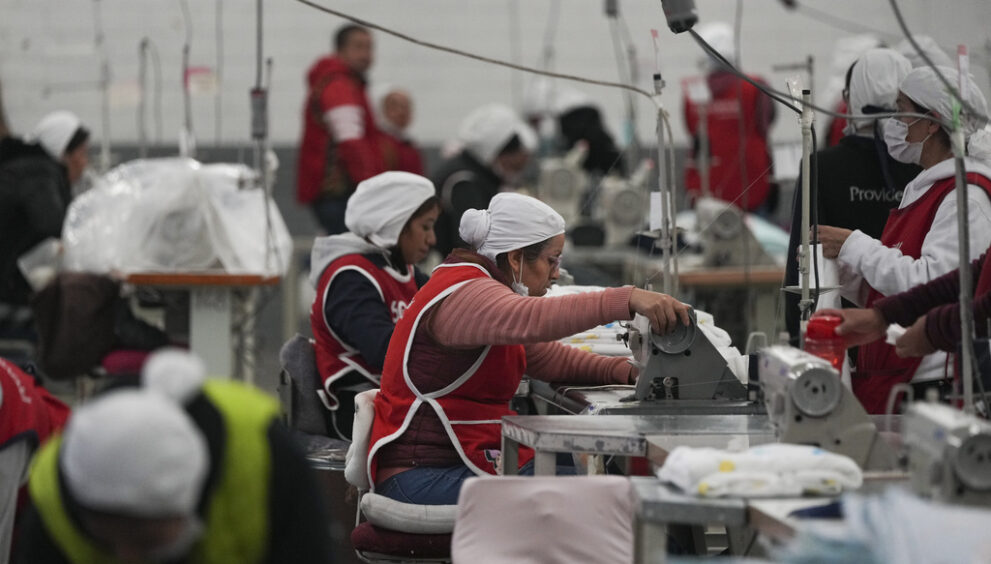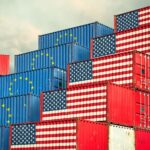Winning the Trade War Game: Strategies to Succeed against Mexico and Canada

The recent announcement from the White House on February 1 stated that President Trump would be enacting new tariffs of 25 percent on imports from Canada and Mexico, as well as an additional 10 percent tariff on imports from China. This decision faced criticism, highlighted in a letter to Trump signed by more than 1,000 economists, including former U.S. Treasury Secretary Larry Summers and former Senate Banking Committee Chairman Phil Gramm (R-Texas), outlining the negative impact of tariffs on both America and the global economy.
Despite opposition from globalists and economists, the implementation of tariffs could potentially benefit the U.S. To Trump, a trade war is not a random chaos but a deliberate tactic to achieve targeted policy objectives. Trump believes that exploiting the economic ties between the U.S. and its North American neighbors presents an opportunity for the U.S. to come out ahead. The central aspect of Trump’s strategy is recognizing the significant reliance of Mexico and Canada on the U.S., with more than 75 percent of their exports directed towards America, forming the foundation of Trump’s plan.
The strategy is simple: Introduce tariffs with the aim of compelling these countries to engage in negotiations. The 25 percent tariffs imposed on Mexican and Canadian goods serve as an incentive for them to bargain within a certain timeframe. The economic strain caused by tariffs will eventually become unbearable for the countries, as Trump anticipates that the leaders of Mexico and Canada will not think strategically and attempting such hardball strategies will not be successful in the long run. As predicted, it didn’t take long for Mexico and Canada to realize their miscalculations and concede to Trump’s initial move.
Currently, both Mexico and Canada are actively working to enhance border security, signifying a successful negotiation strategy for Trump. He understands the leverage he holds over these countries. Trade deals are recurring games that test cooperation between nations, and Trump acknowledges that not all countries are on equal footing with the U.S. This allows Trump to position the U.S. to potentially “win” a trade conflict with Mexico and Canada. However, China presents a different challenge as it is considered a comparable player in the tariff games, indicating a distinct strategic approach and less assured outcomes.
The goal is not to devastate Mexico and Canada’s economies, given the importance of the U.S. market to both countries. Yet, the U.S. administration has considerable leverage in negotiations due to imposed tariffs. Through tariffs, the U.S. could disrupt the economies of both countries significantly, creating an unequal power balance favoring the U.S. The essence of this strategy lies in inflicting long-term economic harm on Mexico (a 3.6 percent decline in GDP) and Canada (a 2 percent drop in GDP) compared to a minimal impact on the U.S., aiming to prompt both nations to seek a resolution beneficial to the U.S.
Trump recognizes the strength of his position, equating it to being dealt four aces in a poker game. While some experts focus on the predicted price increases resulting from tariffs based on economic theories, Trump prioritizes the concepts of leverage, game theory, and decision-making in his strategy. Trump aims to secure a victory in the game rather than just abiding by standard economic theory, emphasizing these principles in potential petition signees. It is crucial for experts to impart these negotiation tactics to students to equip them with practical skills in bargaining.
Anticipating success, Trump understands when to stand firm and when to compromise, aware of the potential risks of future rounds involving retaliatory tariffs from Canada and Mexico. The resulting trade war could harm all involved parties and complicate Trump’s decision-making process due to disrupted supply chains and adverse effects on certain domestic industries. Despite these challenges, Trump’s strategic gamble relies on leveraging economic pressure through tariffs and the interdependence of Mexico and Canada on U.S. markets to steer negotiations towards agreements aligning with America’s interests. While the lasting repercussions remain uncertain, the strategy itself is grounded in exploiting the economic vulnerabilities of America’s neighboring countries and calculating that the U.S., along with Trump, have little to lose.
The authors of the initial piece, Charity-Joy Acchiardo and G. Dirk Mateer, who hold positions at the Civitas Institute in Texas, delve into the strategic maneuvers of tariffs, acknowledging Trump’s calculated tactics to gain leverage in trade negotiations.






















































































































































































































































































































































































































































































































































































































































































































































































































































































































































































































































































































































































































































































































































































































































































































































































































































































































































































































































































































































































































































































































































































































































































































































































































































































































































































































































































































































